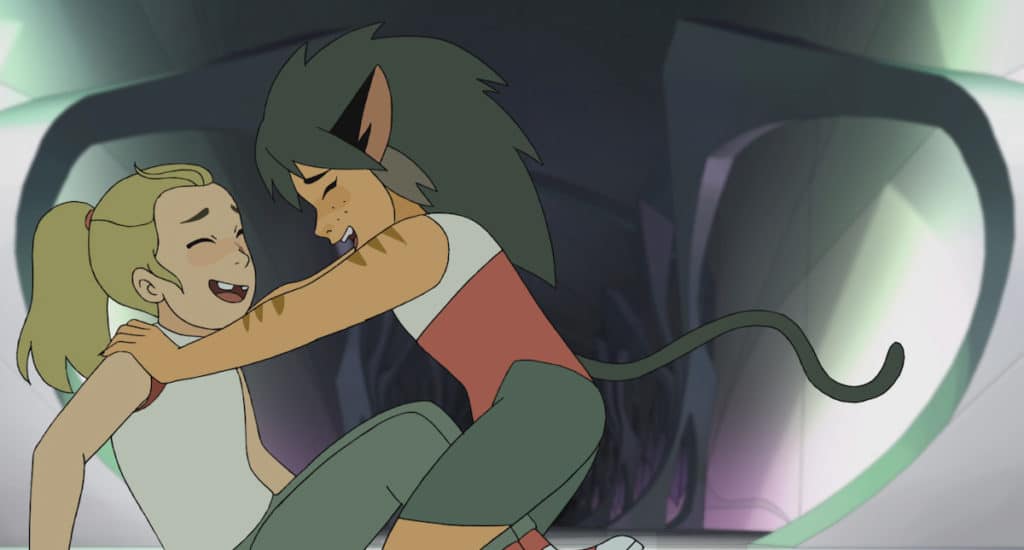Openly queer creator ND Stevenson rebooted the classic 1980s cartoon of She-Ra in 2018, giving us not a frilly princess but a warrior of magic and power. His vision of the hero included a more functional outfit and a more complex story. This was not just He-Man’s long lost sister who was going to save her adopted home, but a girl seeking her own truth.
But this story, a classic Greek hero story, was not born lightly. From the moment the first images were revealed, someone complained. People, mostly men, complained that the characters were too boyish, not pretty enough. There were chubby princesses, people of colour, and oh yes, queers.
A Legend Begins
Four years prior, near the beginning of this site, Avatar the Legend of Korra concluded with a suggestion. Korra and Asami had walked the classic rivals to friends to lovers story, and as the series wrapped up, I was set for disappointment. After all, while this was on Nickelodeon and they did (at the time) air Degrassi, it was a cartoon. There was no way that we would get more than queer baiting.
What we got was far more than I’d expected. It wasn’t a kiss, but you’d have to be incredibly obtuse to not recognize this last moment. The series ended with Korra and Asami holding hands, looking into each other’s eyes, going on ‘vacation’ together.
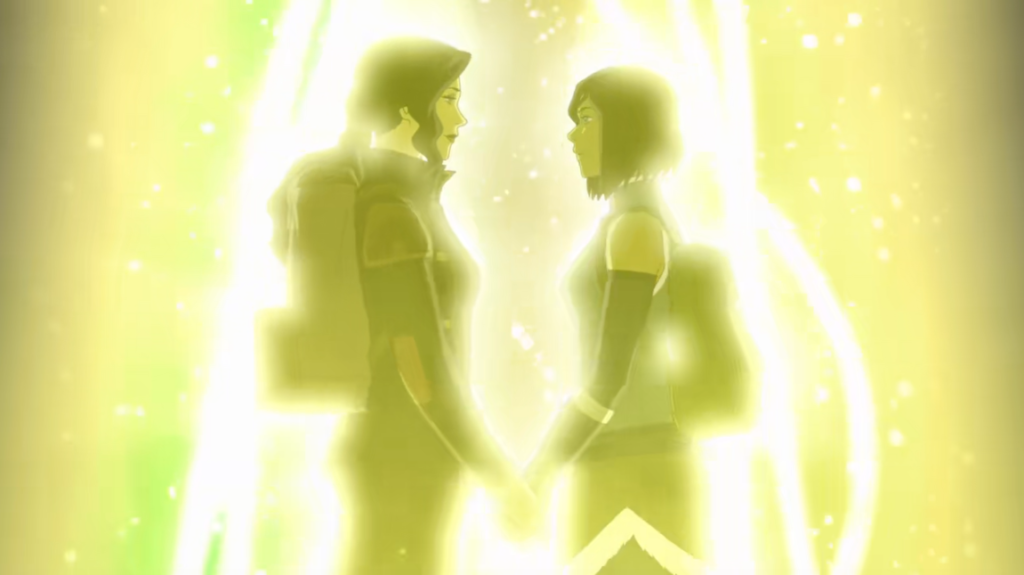
Now it was still a suggestion, but it was an incredibly strong one. And it was one that the show producers confirmed. Yes, Asami and Korra were now dating. The follow up comics reinforced this, including new information that Kya (Katara and Aang’s waterbending daughter) was a lesbian and Avatar Kiyoshi was bisexual.
The Adventure Is Universal
But onscreen? Things were a little different. Representation was limited to suggestions and implications more than overt.
Over on Adventure Time, the relationship between Princess Bubblegum and Marcelline was confusing. It was heavily implied more than shown until the very end. And even with that end, people saw the two snuggled under a blanket with cocoa and went all “Sappho and her friend” on it.
On a more mainstream show, albeit intended for much younger viewers, queer creator Chris Nee’s Doc McStuffins introduced a pair of doll moms for one episode. And on other shows like The Loud House we have seen increasingly positive representation for children.
It’s Different for BoJack and Morty
I do consider it important to have these shows for kids. There’s a huge difference between the intent of a series like BoJack Horseman or Archer, which may have representation (and some of it is amazing) to shows like Steven Universe, where Rebecca Sugar crafted a carefully framed story for children.
It’s not at all an overreach to say that without the marriage of Ruby and Sapphire, we would not have had the relationship of Adora and Catra.
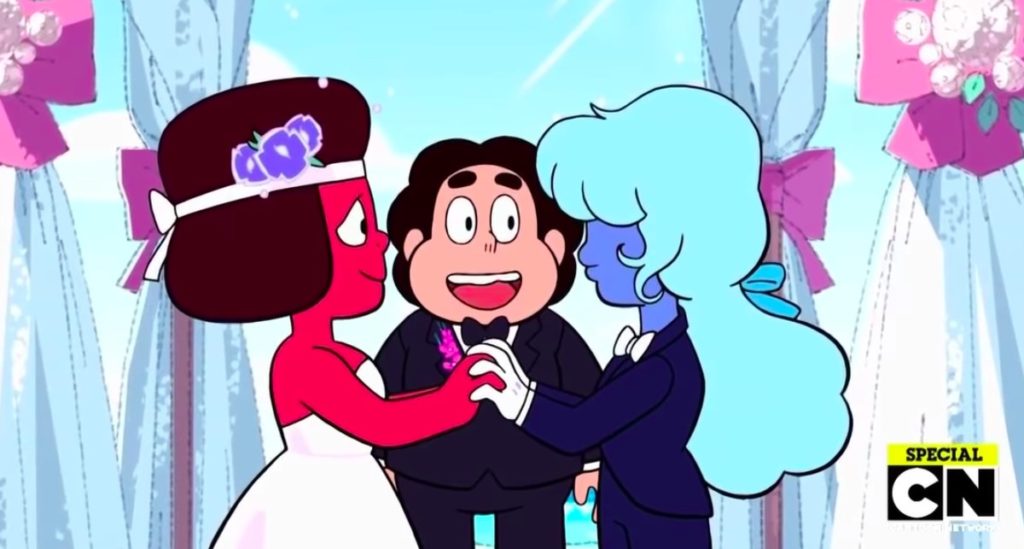
And again, this is different than Big Mouth, which targets the near-teens and adults, and certainly not at all like The Simpsons. Making a show that is for kids and is queer positive is challenging because, quite simply, people don’t want to take the risk.
Queer Creators Understand the Risk
It was a huge risk to show, on a series meant for young people, the protagonists kissing, but that wasn’t just what Stevenson did.
First he gave us Spinerella and Netossa, married princesses who mentioned their anniversary and called each other wife in the final season. Then we had Lance and George, Bow’s bookish fathers who are at a loss to how they produced a jock son. We also got Double Trouble, a non-binary shapeshifter.
And then we had the … implications of the Princess Ball.
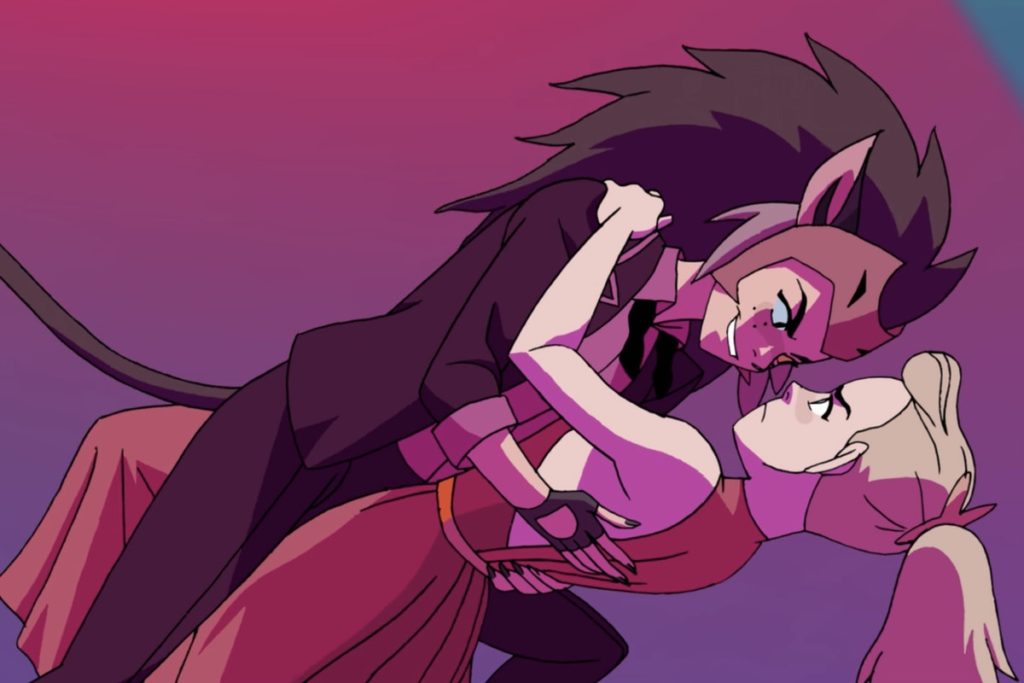
I really don’t know how else to explain that whole episode. From Catra being speechless at Scorpia’s glamorous dress to the undone bow tie and the dance sequence, we had a big gay prom like we’ve all secretly longed for much of our lives. And then they gave us the payoff.
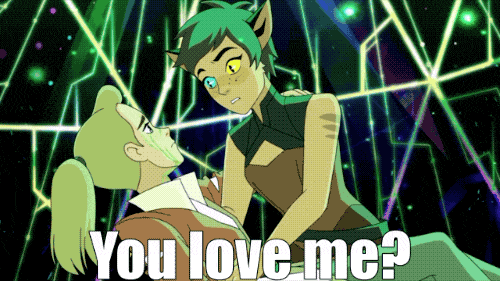
Having the final season end with professions of love from Catra first, and then reciprocated by Adora, had me hitting pause to cheer. Their friendship and platonic love was such a crucial part of the 52 episode series, but to get there in the end where they both realize they can be better people together? It was perfect.
And above all of that, Stevenson knew he had to tell the story right.
Even without any kind of executive mandates, or any worry at all of censorship, I think for creators telling queer stories it’s not quite time yet for certain things.
For example, having one or both of them actually die. I wanted to always make it feel like that was possible because I feel it would not be quite as suspenseful if you felt like they were immortal. But I really do feel right now, writing queer characters, they have to be immortal right now.
I can’t see another gay character die on TV for the moment. Maybe one day we can have a tragic gay romance again, but that has been, like, the only norm for so long. So for a little while, you do have to kind of accept more of a limited set of tools.
ND Stevenson, LA Times Once ‘so secret,’ a queer Netflix series finally puts all its cards on the table
Love Wins in the End
The takeaway from She-Ra is not a super deep one. It’s not supposed to be. This is a series for young children. It’s a direct story of being who you are, no matter how weird that may be. If you’re the nerd who doesn’t get people, you’re still welcome. If you’re the guy who lights your boats on fire, well, maybe stop that, but you have a place here too.
And if you’re a strange cat child and an insufferable best friend who always has to jump in to help others, well, maybe you can find the person you were looking for all this time was beside you all along.
It was with love that Glimmer and Bow kept fighting. It was with love that Catra learned to be a little more selfless and Adora learned to care about people by being there and not just running into danger. It was with love that the best friend’s squad won.
If you haven’t watched She-Ra on Netflix, go check it out. Even if you’re an adult. You’ll win in the end too.
